No tidy end to WW2 for British Airborne POWs on their long odyssey home from prison camps
Celebrating milestone anniversaries, such as VE Day 75 offers us a means of commemorating six years of a messy, horrific conflict with a heartfelt salute to soldiers, sailors and aviators who fought for freedom and democracy. We rightly honour those who gave their lives and never came back along with those who survived to return and tell the tale. May 1945 also saw the conclusion of a titanic effort on the home front to keep the troops fighting, involving its share of sacrifice for civilian men, women and children.
In reality, May 1945 was not a transformational cut off point between peace and war. It saw no tidy ending, with significant parts of the world still devastated, millions of people displaced from their homes, starving and deeply traumatized. Meanwhile, on the other side of the world, savage battles were being waged between the Allies and the forces of the Japanese Empire. This was still a world in flames and ruins, with much suffering still to come.
For many civilians and combatants in Continental Europe the road home was a long one, including for thousands of soldiers belonging to the British 1st Airborne Division. They had been taken prisoner during the Battle of Arnhem in September 1944 and shipped off on trains to Prisoner of War (POW) camps scattered across Germany.
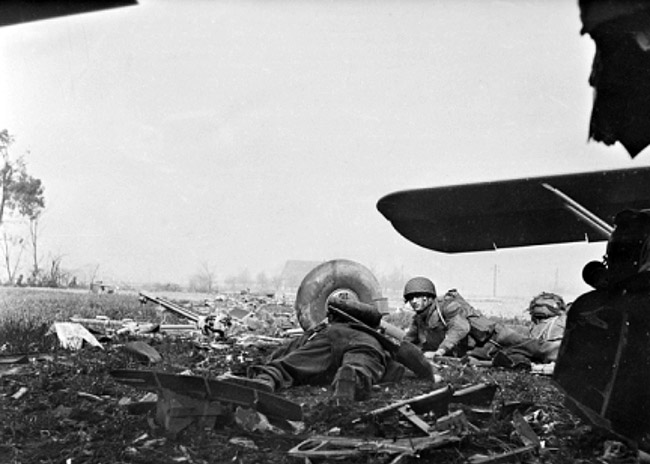
British soldiers from the 6th Airborne Division in combat during Operation Varsity in March 1945, when Allied forces finally made their leap across the Rhine, which they had failed to do at Arnhem the previous autumn. Photo: Australian War Memorial (AWM).
Twenty-year-old Private Frank Newhouse of the 10th Battalion, The Parachute Regiment, who had been wounded in the head while trying to knock out a German tank, ended up in a small camp near Dresden. He was put on working parties clearing up the rubble and body parts in the aftermath of the Allied bombing raids of early 1945.
After being forced to dig the grave of a fellow POW who was unjustly executed, he and three comrades were abandoned by their guards as the Reich collapsed and left to wander through southern Germany and into Czechoslovakia. It was an odyssey that did not end until well after VE Day.
As those back home in Britain were celebrating in the streets, Newhouse and his fellow Airborne refugees were trudging towards the spa town of Karlovy Vary, in the German speaking Sudetenland. Going from door-to-door they begged for food and shelter. Eventually the British soldiers were offered sanctuary by a frightened woman and her husband. They feared predatory Russian soldiers seeking to rape and pillage would break into their home. The couple asked for protection, in return for which they would give Newhouse and his three fellow POWs bed and board.
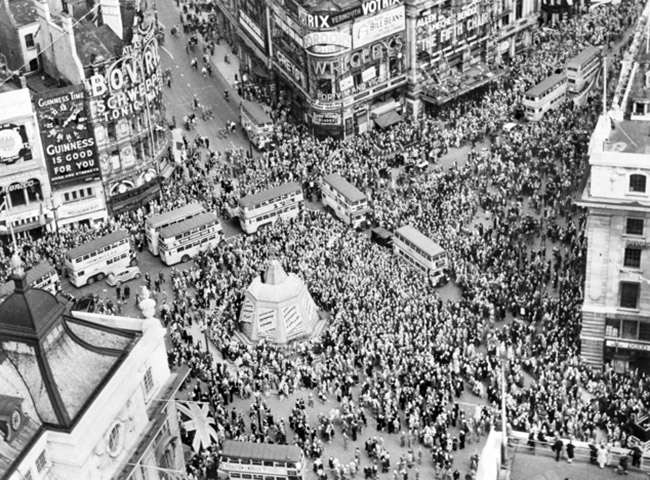
Crowds gather at Piccadilly Circus, London, on 8 May 1945 (VE Day) to celebrate the end of WW2 in Europe. Photo: AWM.
In a cruel irony, American troops, with whom the British could well have hitched a ride west, had occupied the town on 6 May but under the terms of an agreement between the Western allies and Russia were pulled back on 11 May. Newhouse and the others soon left Karlovy Vary, resuming their trek west. Exhausted and starving they spent the next month walking across country to Regensburg.
There they met some American troops who were delighted to give them a slap-up meal and provide transportation. ‘They took us to an airfield,’ recalls Newhouse in my book ‘Arnhem: Ten Days in The Cauldron’. ‘They gave us a couple of jerry cans of petrol and a car and told us to go to Brussels. The four of us got in this car and drove to Brussels and got deloused and then [sent] home.’ Newhouse turned 21 in September 1945, later reflecting that since he parachuted into Holland the previous autumn ‘a multitude of things happened…I’d lived a lifetime.’
Another paratrooper who fought at Arnhem and was also wounded, similarly made a long trek to freedom as the war ended. This was Corporal Harry Tucker, aged 25 when he jumped into action. After his wounds healed, Cpl Tucker twice escaped from prison camps while out on working parties, almost being shot when recaptured by the enemy the first time. On the second occasion he got away properly.
During his wanderings Tucker met some Frenchmen who had been transported into the Reich to work in factories turning out war materials. Like him they had escaped as their captors became less vigilant amid the growing chaos. Despite lacking a common language, it was agreed that he would help them make their way to freedom in the west in exchange for a share of the food and drink they were carrying.
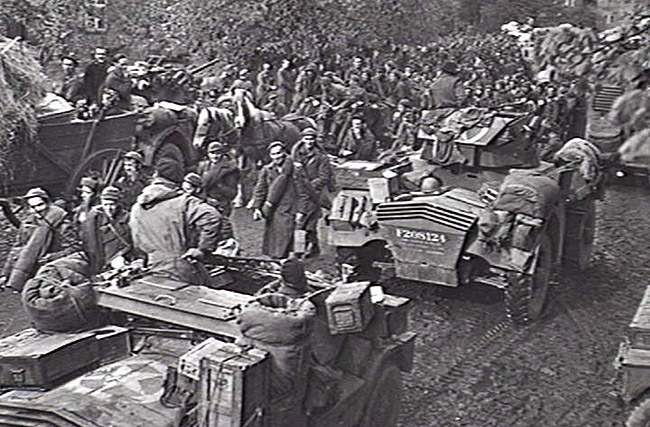
Allied POWs walking to freedom and civilian refugees mix with British armour on a German country road in May 1945. Photo: AWM.
Eventually, they encountered an American soldier who asked for identification papers and though Tucker spoke the King’s English, it was still not enough to reassure the nervous G.I. Then the British paratrooper had a good idea: ‘I rolled up my sleeves and showed him my tattoos. Finally, he was convinced, when he saw “Dad” on one arm and “Mum” on the other. The Yank smiled and gave me a bar of chocolate. I burst into tears because I was so glad to have finally escaped and made it to friendly lines.’
Twenty-year-old paratrooper Private James Sims, from the 2nd Battalion, The Parachute Regiment who fought at the Arnhem road bridge before being captured, was at one stage in a POW working party strafed by marauding Allied aircraft. Captivity for Sims ended when SS guards marched 300 POWs east across country, it was feared to be held hostage in Berlin. However, the SS guards soon though better of it and absconded, after surrendering their rifles to the prisoners. That was when the moment of maximum danger clanked over the horizon. The POWs ended up pressing themselves into the mud of a field when caught between a battling British self-propelled gun and an enemy Tiger tank. The panzer came off worse and scuttled away, hotly pursued by its foe.
In the aftermath of this scrap, Sims and the other POWs wondered how to signal their presence to passing Allied aircraft and ended up using bits of cloth to spell out ‘POW’ on the ground. This was soon spotted and the following day a Bren gun carrier from a British Army unit emerged from some nearby woods. It trundled towards a large group of prisoners, who charge forward cheering their lungs out. ‘We practically lifted that carrier off the ground as we engulfed it in a human wave,’ related Sims. ‘At last it was all over.’
‘Arnhem: Ten Days in The Cauldron’ is published by Agora Books

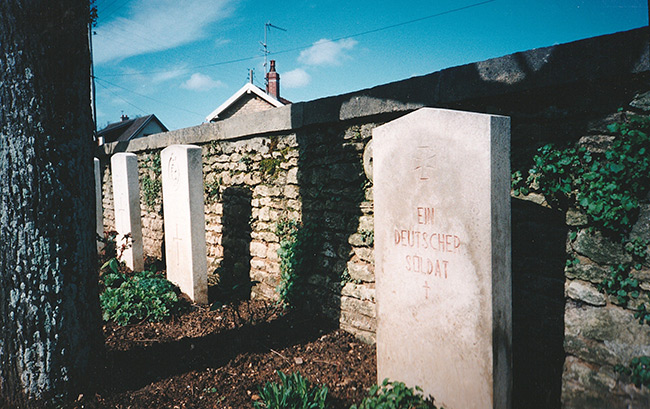
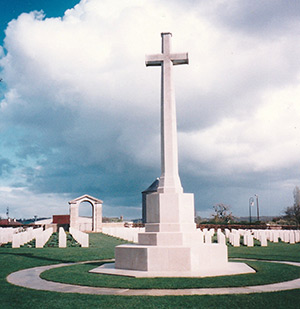
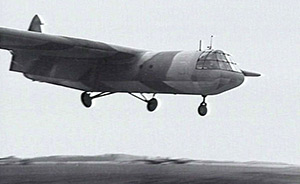


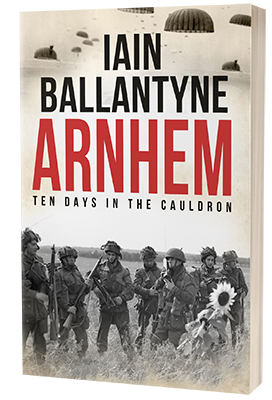 “This weekend I finished reading Iain Ballantyne’s book ‘Arnhem: Ten Days in The Cauldron’ and felt as if I had relived the entire battle again,” said Jan.
“This weekend I finished reading Iain Ballantyne’s book ‘Arnhem: Ten Days in The Cauldron’ and felt as if I had relived the entire battle again,” said Jan.